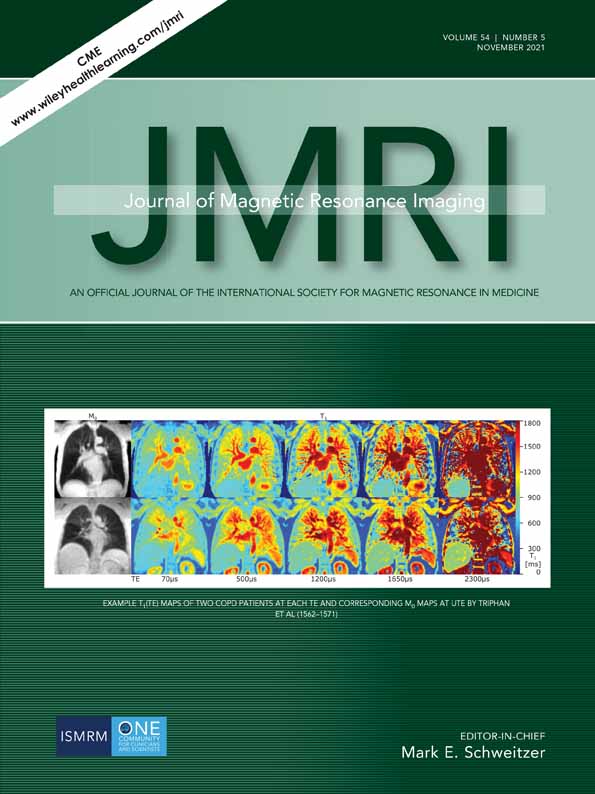Right Ventricular Function and T1-Mapping in Boys With Duchenne Muscular Dystrophy
Abstract
Background
Clinical management of boys with Duchenne muscular dystrophy (DMD) relies on in-depth understanding of cardiac involvement, but right ventricular (RV) structural and functional remodeling remains understudied.
Purpose
To evaluate several analysis methods and identify the most reliable one to measure RV pre- and postcontrast T1 (RV-T1) and to characterize myocardial remodeling in the RV of boys with DMD.
Study Type
Prospective.
Population
Boys with DMD (N = 27) and age-/sex-matched healthy controls (N = 17) from two sites.
Field Strength/Sequence
3.0 T using balanced steady state free precession, motion-corrected phase sensitive inversion recovery and modified Look-Locker inversion recovery sequences.
Assessment
Biventricular mass (Mi), end-diastolic volume (EDVi) and ejection fraction (EF) assessment, tricuspid annular excursion (TAE), late gadolinium enhancement (LGE), pre- and postcontrast myocardial T1 maps. The RV-T1 reliability was assessed by three observers in four different RV regions of interest (ROI) using intraclass correlation (ICC).
Statistical Tests
The Wilcoxon rank sum test was used to compare RV-T1 differences between DMD boys with negative LGE(−) or positive LGE(+) and healthy controls. Additionally, correlation of precontrast RV-T1 with functional measures was performed. A P-value <0.05 was considered statistically significant.
Results
A 1-pixel thick RV circumferential ROI proved most reliable (ICC > 0.91) for assessing RV-T1. Precontrast RV-T1 was significantly higher in boys with DMD compared to controls. Both LGE(−) and LGE(+) boys had significantly elevated precontrast RV-T1 compared to controls (1543 [1489–1597] msec and 1550 [1402–1699] msec vs. 1436 [1399–1473] msec, respectively). Compared to healthy controls, boys with DMD had preserved RVEF (51.8 [9.9]% vs. 54.2 [7.2]%, P = 0.31) and significantly reduced RVMi (29.8 [9.7] g vs. 48.0 [15.7] g), RVEDVi (69.8 [29.7] mL/m2 vs. 89.1 [21.9] mL/m2), and TAE (22.0 [3.2] cm vs. 26.0 [4.7] cm). Significant correlations were found between precontrast RV-T1 and RVEF (β = −0.48%/msec) and between LV-T1 and LVEF (β = −0.51%/msec).
Data Conclusion
Precontrast RV-T1 is elevated in boys with DMD compared to healthy controls and is negatively correlated with RVEF.
Level of Evidence
1
Technical Efficacy
Stage 2




